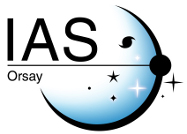Gas-rich mergers and feedback are ubiquitous amongst starbursting radio galaxies, as revealed by the VLA, IRAM PdBI and Herschel
| Titre | Gas-rich mergers and feedback are ubiquitous amongst starbursting radio galaxies, as revealed by the VLA, IRAM PdBI and Herschel |
| Type de publication | Journal Article |
| Year of Publication | 2012 |
| Auteurs | Ivison, RJ, Smail, I, Amblard, A, Arumugam, V, De Breuck, C, Emonts, BHC, Feain, I, Greve, TR, Haas, M, Ibar, E, Jarvis, MJ, Kovacs, A, Lehnert, MD, Nesvadba, NPH, Rottgering, HJA, Seymour, N, Wylezalek, D |
| Journal | Monthly Notices of the Royal Astronomical Society |
| Volume | 425 |
| Pagination | 1320-1331 |
| Date Published | Sep |
| ISBN Number | 0035-8711 |
| Numéro d'accès | WOS:000307888300039 |
| Résumé | We report new, sensitive observations of two z?similar to?33.5 far-infrared-luminous radio galaxies, 6C?1909+72 and B3?J2330+3927, in the 12CO J = 1-0 transition with the Karl Jansky Very Large Array and at 100500?m using Herschel, alongside new and archival 12CO J = 4-3 observations from the Plateau de Bure Interferometer. We introduce a new colourcolour diagnostic plot to constrain the redshifts of several distant, dusty galaxies in our target fields. A bright SMG near 6C?1909+72 likely shares the same node or filament as the signpost active galactic nuclei (AGN), but it is not detected in 12CO despite similar to 20?000?km?s-1 of velocity coverage. Also in the 6C?1909+72 field, a large, red dust feature spanning 500?kpc is aligned with the radio jet. We suggest several processes by which metal-rich material may have been transported, favouring a collimated outflow reminiscent of the jet-oriented metal enrichment seen in local cluster environments. Our interferometric imaging reveals a gas-rich companion to B3?J2330+3927; indeed, all bar one of the eight z ? 2 radio galaxies (or companions) detected in 12CO provide some evidence that starburst activity in radio-loud AGN at high redshift is driven by the interaction of two or more gas-rich systems in which a significant mass of stars has already formed, rather than via steady accretion of cold gas from the cosmic web. We find that the 12CO brightness temperature ratios in radio-loud AGN host galaxies are significantly higher than those seen in similarly intense starbursts where AGN activity is less pronounced. Our most extreme example, where L CO 4-3'/L CO 1-0'>2.7, provides evidence that significant energy is being deposited rapidly into the molecular gas via X-rays and/or mechanical (quasar-mode) feedback from the AGN, leading to a high degree of turbulence globally and a low optical depth in 12CO feedback that may lead to the cessation of star formation on a time-scale commensurate with that of the jet activity, ?10?Myr. |



